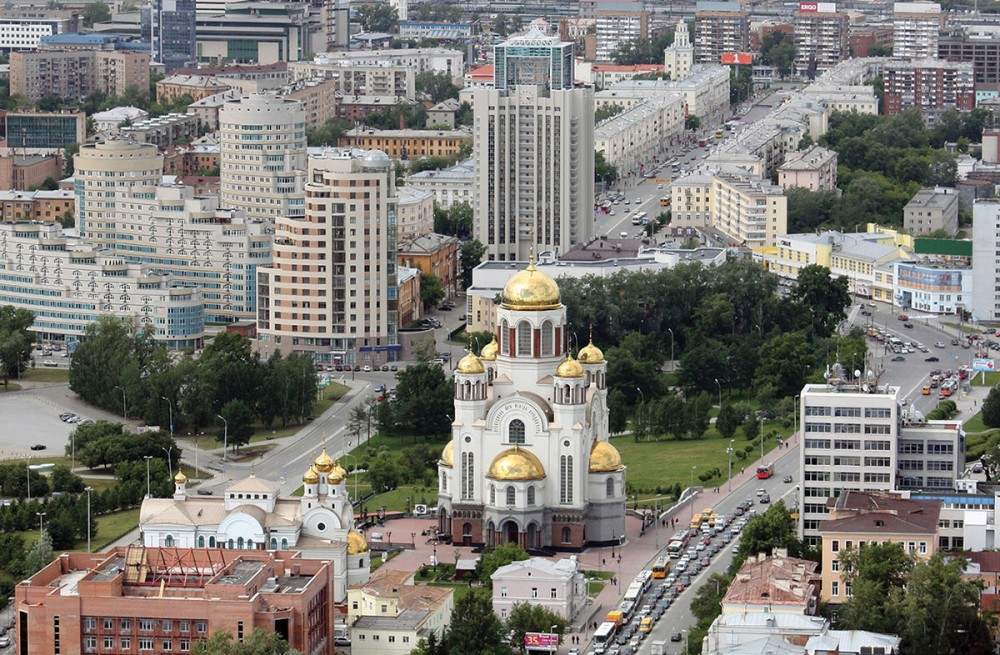Russia’s royal saints return
The cult of Tsar Nicholas II and the resurrection of Russian Orthodox nationalism

Growing up as a baby boomer with an interest in history, I had no doubt about the permanence of the Soviet Union and of communism. Russia’s tsars and tsarists, by contrast, belonged to ancient history, together with such quaint names as St. Petersburg.
But the past 30 years have witnessed the rapid restoration of many aspects of old Russia, including many of those long-dormant names. Still more surprising has been the rise of a new cult of royal saints in Russia, together with many kinds of medieval-seeming devotion.
Read our latest issue or browse back issues.
By most accounts, Russia’s modern history began in 1918 with the murder of Tsar Nicholas II and his family in the city of Ekaterinburg, and the slaughter of many more relatives and followers over the following days. That was, it seemed, the beginning of a Bolshevik modernity.
Originally named for a Russian empress named Catherine, Ekaterinburg was renamed Sverdlovsk for a Bolshevik monster named Yakov Sverdlov—the one who probably gave the order to murder the tsar’s family—and it remained Sverdlovsk until 1991. Except for lunatic theories about how one of the royal princesses escaped the carnage, the imperial Romanov family was duly consigned to historical irrelevance.
After the Soviet regime collapsed in 1991, the church staged a powerful revival, in intimate alliance with the Russian state. A restored Ekaterinburg has played a pivotal role in that resurrection. After decades of trying to conceal or destroy the murder site, the government finally ceded the site to the church in 1990, opening the way to a new era of veneration.
In 1981, the Russian Orthodox Church abroad canonized the Romanov family as martyrs. After some debate, the Moscow Patriarchate followed suit in 2000 when it pronounced them “bearers of the passion” for the Christlike manner of their deaths. In 1998, the bodies of Nicholas and family were reinterred at St. Peter and Paul Cathedral in St. Petersburg (which until very recently had been Leningrad).
For anyone familiar with Byzantine or medieval history, the activity of the new cult of Nicholas has been familiar. Followers decided that the royal martyrs needed a splendid new church on the site of their deaths, one that is worthy of their sanctity and dignity. A magnificent complex has been built, centered on the so-called Church on Blood in Honour of All Saints Resplendent in the Russian Land.
The Ekaterinburg complex is a thriving pilgrimage center, and soil from the site of the original murder house is prized as, literally, holy ground. Icons of Nicholas and his family abound. When the church was visited by a reverent Vladimir Putin, the moment perfectly symbolized the country’s ideological reversal, not to mention Orthodox hopes for a glorious new century grounded in traditional values.
Over the past quarter century, the cult of the royal family—and above all of Nicholas II himself—has become ever more exalted and is indeed the indispensable foundation of revived Orthodox nationalism. Nicholas has become a Russian Christ figure, the tsar-martyr “Nicholas the Good,” who gave his life for an authentic Christian Russia.
Modern events have given that cause a particular edge, as nationalists find themselves facing multiple menaces and insults, both internal and external. They bitterly resent the dismemberment of the old Soviet Union into multiple states with varying degrees of independence. Within Russia, demographic trends point to the steep decline of older white and Christian populations and the rise of Islam: by 2040, the Islamic share of the population could approach 30 percent. What would that mean for a Russia that so long defined itself as the bastion of true Christian faith? That worrisome question lurks behind the passionate devotion to the country’s Orthodox history and its modern martyrs.
Just how sensitive the Romanovs’ reputation has become was demonstrated in 2017 when director Alexei Uchitel released the film Matilde. This lavish—indeed over-the-top—production commemorated ballet dancer Mathilde Kschessinska, who in the 1890s had an affair with Crown Prince Nicholas, prior to his marriage. Beyond its suggestion that the royal saint had violated Christian chastity, the production has torrid moments, including a scene in which the dancer exposed a breast. For critics, the whole production was blasphemy, and politicians demanded it be banned.
Using the slogan “Burn for Mathilde!” activists threatened to destroy cinemas showing the film. The director received death threats, as did cinema owners and distributors. Cars and properties were torched, including one cinema in Ekaterinburg. Some fearful owners yielded to the pressure and agreed not to screen Matilde.
Who would have thought that in the 21st century people might be prepared to die for the honor of the Romanov dynasty, or to kill for it?
A version of this article appears in the print edition under the title “Tsar and martyr.”







